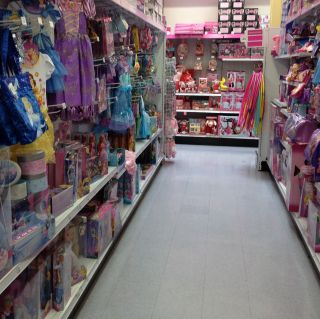Gender
Explaining Gender Differences
Is there a biological explanation for why girls like Barbie, and does it matter?
Posted August 28, 2012

Just last month, the renowned British department store Harrods unveiled its Toy Kingdom, a 26,000-square-foot array of children’s toys that bucks current trends in marketing for children: the toys are organized by theme, not by gender. As a parent myself, I’m all too familiar with the color-coded aisles one finds in most clothing and toy stores: pink with princesses and ponies on one side, blue with trucks and robots on the other.
How a single store chooses to showcase its playthings may not seem terribly consequential — even if it is Harrods — but the move has people talking, including coverage in The Guardian, The New York Times, The Huffington Post, and CNN.com. That’s because toys are no trivial matter: they both reflect and shape our assumptions about acceptable interests and behavior for girls and for boys.
Books like Peggy Orenstein’s Cinderella Ate My Daughter and Jennifer Hartstein’s Princess Recovery reveal a growing concern for how sociocultural factors can negatively impact boys’ and girls’ development and raise perennial questions about nature versus nurture when it comes to gendered behavior.
As with every other aspect of human psychology, it’s likely that both nature and nurture contribute to actual and perceived differences across genders. But it turns out that how the media explains gender differences can itself influence the extent to which people endorse gender stereotypes.
A 2004 paper published in Psychological Science found that politically conservative sources were more likely than liberal sources to explain gender differences by appeal to biological as opposed to sociocultural factors, and that reading a biological explanation significantly increased readers’ endorsement of traditional gender stereotypes.
In their first study, researchers Victoria Brescoll and Marianne LaFrance selected a geographically-diverse subset of the 50 newspapers with the highest daily circulation in the United States. They then randomly chose 10 articles from each newspaper, published between 1994 and 2001, that offered an explanation for a gender difference, and the explanations were identified as biological or non-biological. For example, an explanation that appealed to sex differences in brain structure, evolution, genetics, hormones, or neurotransmitters would be identified as biological, while one appealing to culture or upbringing was considered sociocultural. Newspapers like the Omaha World-Herald and the Dallas Morning News scored high on the proportion of biological explanations their articles included, while newspapers like The Cleveland Plain Dealer and the Boston Globe scored low.
To get a sense for the political stance of each media outlet, the researchers identified newspapers that endorsed Republican presidential candidates as more conservative, and those that opposed the admission of women to military academies as more traditional in their attitude to sex roles. And it turned out that both of these factors were associated with the type of explanation for gender differences that newspapers tended to report: newspapers that were more conservative and more traditional in their stance on sex roles were more likely to report biological explanations for gender differences.
But does this bias in reporting matter?

But does this bias in reporting matter?
A second study revealed that it does. Participants read one of four fictional news stories that were indistinguishable from published articles. The fictional stories reported either that men or that women are better at identifying plants — a topic chosen because it isn’t strongly associated with existing gender stereotypes — and offered either a biological or a sociocultural explanation for this difference. The researchers found that participants who read the biological explanations were more likely to subsequently endorse the idea that people cannot easily change, and to associate each sex with stereotypical attributes, like being nurturant, intuitive, whiny, and nagging for women, and being competitive, quantitatively skilled, arrogant, and egotistical for men. These effects were found whether the fictional news story claimed that men or that women had superior ability.
In their final study, the researchers considered whether it was biological explanations that encouraged the view of people as essentially stable reflections of traditional gender stereotypes, or rather that sociocultural explanations discouraged these conceptions. The results revealed two different effects. When it came to endorsing traditional gender stereotypes, a biological explanation increased endorsements (relative to no explanation), and a sociocultural explanation had no effect one way or the other. But when it came to endorsing the idea that people cannot change, a sociocultural explanation decreased endorsements (relative to no explanation), and a biological explanation had no effect one way or the other.
Just as toys can have subtle but pervasive effects on children’s expectations for others and themselves, it looks like the explanations for gender differences that adults read in their daily papers can do the same, with biological explanations for gender differences leading to the belief that traditional gender stereotypes are true. Note that this was found even though the biological explanation that was offered concerned the ability to identify plants – a skill that isn’t associated with traditional stereotypes for men or for women. Simply having a biological explanation for some sex difference reinforced stereotypic associations about the properties of men and women.
Is there a lesson for parents hoping to raise open-minded children who aren’t hampered by gender-specific expectations? It may be that how you explain apparent gender differences to kids is just as important as the toys you encourage them to play with.




